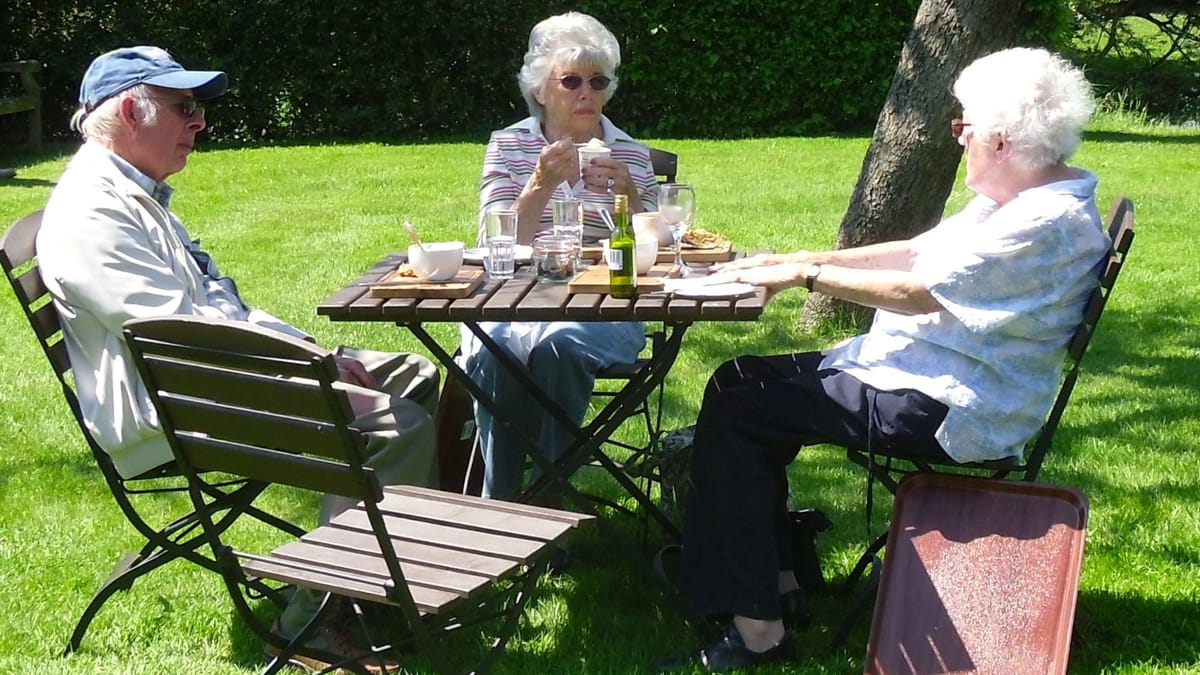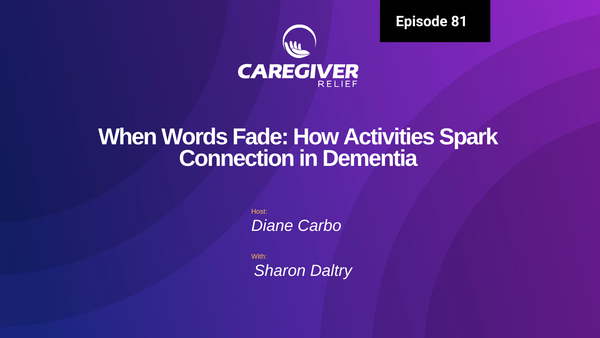Daily Activities for a Person with Dementia
Eating is one of the greatest pleasures of life, but it can become a challenge for those with dementia. Learn how to encourage adequate intake and assure a more pleasurable dining experience for your aging family member with dementia.

Understanding Dementia and Daily Activities
Understanding dementia is crucial for providing effective care and support to individuals with the condition. Dementia is a broad term that describes a decline in cognitive function, including memory loss, difficulty with communication, problem-solving, and judgment. Alzheimer’s disease is the most common form of dementia, accounting for about two-thirds of cases. Daily activities play a vital role in maintaining the physical and cognitive health of individuals with dementia. Engaging in meaningful activities can help individuals with dementia achieve a sense of purpose and pleasure, reducing the risk of depression, anxiety, and agitation.
Early Stages of Dementia: Maintaining Independence
In the early stages of dementia, individuals may still be able to maintain their independence, but they may require support and assistance with daily activities. Family members and caregivers can play a significant role in helping individuals with dementia maintain their independence by providing emotional support, practical assistance, and encouraging them to engage in activities they enjoy. Planning activities that are tailored to the individual’s current abilities and interests can help maintain their cognitive health and overall well-being. It is essential to involve the person with dementia in the planning process to ensure that their needs and preferences are met.
Meaningful Activities for Dementia Patients at Home
Eating is one of the greatest pleasures of life, but it can become a challenge for those with dementia. Learn how to encourage adequate intake and assure a more pleasurable dining experience for your aging family member with dementia.
Activities for Dementia home care plan
Activities of daily living with dementia series, lets address eating…
Eating is one of the greatest pleasures of life. It’s one of the ADLs (activities of daily living) that most of us take for granted. Even in the early stages of dementia, your family member may show some problems with diet.
Alzheimer's disease people can still engage in previously enjoyed activities, and it is important to balance support and independence to help them maintain their sense of usefulness and connection to their prior selves.
They may be able to eat without assistance in the early stages of dementia. The problem is they may not eat a balanced diet.
Some may eat the same foods continuously. Others begin eating less or more than usual. Those with different types of dementia, may eat a lot of certain kinds of foods. Often this is to the exclusion of most any other type of food. For example, they will eat only cereal.
Advancing dementia, is, not the only thing that can interfere with a person’s appetite.
These conditions should be addressed with your health care provider.
Some other possible causes of poor eating habits include:
- Infection
- Brain damage not related to dementia
- Poor oral care/hygiene
- Missing teeth/dentures
- Mouth pain or discomfort
- Medication side effects
- Not feeling hungry
- Pain
- Visual changes
- Chronic illness
Psychological factors can contribute as well.
Such as:
- Too much noise
- Change in routines
- Being bored
- Feeling depressed
- Feeling rushed
- Responding to the moods of others
More on Activities of Daily Living with Dementia Tips : Eating …
These will help you encourage adequate intake. It can also help assure a more pleasurable dining experience:
- Give good oral care so taste buds can be more sensitive to taste and so food in general tastes and smells better
- Make for a pleasant eating environment. Control unpleasant odors. Get rid of unpleasant looking objects. Minimize and make the dining area brightly lit
- Do not use plastic utensils. They can be broken if the person bites down too hard
- Wash their hands (or cue them to do it) before eating
- Don’t use table settings (table cloths, plates, napkins, place mats) with patterns; keep it simple
- More frequent, smaller meals might work for those who eat poorly or who want to eat constantly
- Be sure to offer enough liquids, as older people produce less saliva
- Your aging family member should have regular dental visits as needed
- Try feeding most of one food at a time. Avoid mixing foods. The sudden or frequent change in the taste and textures of different foods can be confusing
- Use straws or cups with lids to make drinking easier
Prepare food as needed:
- Cut meats,
- Open beverage containers
- Place silverware on the side of the dominant hand
- Butter the bread, etc.
- Small portions are usually best
- Glasses should not be completely filled with beverage. Refill with smaller amounts is generally better
- Finger foods might be indicated for those who forget how to eat with silverware
- Encourage independence. Sometimes the person will begin eating once you make the first move by lifting a spoonful of food to her mouth
- It is often easier to eat from a bowl than off a plate
- Liquids should not be too hot or too cold; if in doubt, check the temperature
- Omit foods that are hard to chew or swallow. This includes nuts, popcorn, peanut butter, hard candy, raw vegetables, etc.
- Learn the Heimlich Use it if choking on solid food occurs to the point of restricting air flow
If direct assistance with feeding is required, use proper feeding techniques. When feeding a person with swallowing problems, such as:
- Proper positioning and body alignment
- Small bites
- Allow to chew thoroughly
- Offer sips of liquid frequently
- Cue or remind to swallow
- Feed from the tip of a spoon instead of from the side
- Watch for “pocketing” food (holding food in the cheeks)
- Alternate between feeding solids and liquids
- Check for food stored in the mouth
- Mechanical soft or pureed diet might be indicated
- Observe for choking or swallowing difficulties
- Be patient and give your family member time to chew and swallow
More on Activities of Daily Living with Dementia Tips : Eating …
These will help you encourage adequate intake. It can also help assure a more pleasurable dining experience:
- Give good oral care so taste buds can be more sensitive to taste and so food in general tastes and smells better
- Make for a pleasant eating environment. Control unpleasant odors. Get rid of unpleasant looking objects. Minimize and make the dining area brightly lit
- Do not use plastic utensils. They can be broken if the person bites down too hard
- Wash their hands (or cue them to do it) before eating
- Don’t use table settings (table cloths, plates, napkins, place mats) with patterns; keep it simple
- More frequent, smaller meals might work for those who eat poorly or who want to eat constantly
- Be sure to offer enough liquids, as older people produce less saliva
- Your aging family member should have regular dental visits as needed
- Try feeding most of one food at a time. Avoid mixing foods. The sudden or frequent change in the taste and textures of different foods can be confusing
- Use straws or cups with lids to make drinking easier
Prepare food as needed:
- Cut meats,
- Open beverage containers
- Place silverware on the side of the dominant hand
- Butter the bread, etc.
- Small portions are usually best
- Glasses should not be completely filled with beverage. Refill with smaller amounts is generally better
- Finger foods might be indicated for those who forget how to eat with silverware
- Encourage independence. Sometimes the person will begin eating once you make the first move by lifting a spoonful of food to her mouth
- It is often easier to eat from a bowl than off a plate
- Liquids should not be too hot or too cold; if in doubt, check the temperature
- Omit foods that are hard to chew or swallow. This includes nuts, popcorn, peanut butter, hard candy, raw vegetables, etc.
- Learn the Heimlich Use it if choking on solid food occurs to the point of restricting air flow
If direct assistance with feeding is required, use proper feeding techniques. When feeding a person with swallowing problems, such as:
- Proper positioning and body alignment
- Small bites
- Allow to chew thoroughly
- Offer sips of liquid frequently
- Cue or remind to swallow
- Feed from the tip of a spoon instead of from the side
- Watch for “pocketing” food (holding food in the cheeks)
- Alternate between feeding solids and liquids
- Check for food stored in the mouth
- Mechanical soft or pureed diet might be indicated
- Observe for choking or swallowing difficulties
- Be patient and give your family member time to chew and swallow
More activities of daily living with dementia tips….
Any of the activities of daily living with dementia tips and techniques requires the use of common sense.
If you observe your family member having difficulty with:
Eating, or chewing or swallowing you can request a swallowing and feeding evaluation.
This evaluation could assist you, the caregiver, in learning the proper techniques on how to feed your family member properly.
Here are more articles on this subject...

















